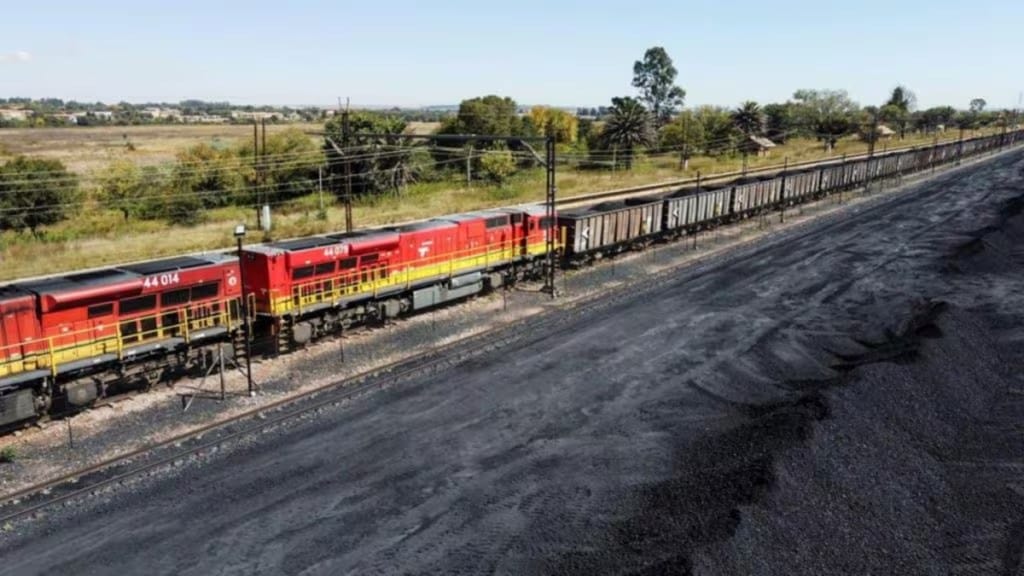After years of delay, the dedicated freight corridor (DFC) project is nearing completion. With December 2025 as the targetted deadline, the two corridors – east and west –will help ease reight traffic, reduce the overall logistics costs, and improve economic efficiency and prodctivity. The corridors are turning out to be profit centres, helping the government find more non-debt financial resources for rapid modernisation and capacity augmentation of the country’s railway systems, and attendant facilities. Praveen Kumar, managing director of Dedicated Freight Corridor Corporation of India (DFCCIL) talks about the current status of DFC projects and the future plans, in an interview with Manu Kaushik. Excerpts:
Q: What is the current status of dedicated freight corridors?
A: As far as western DFC is concerned, the last leg which is 102 kilometre from Vaitarna to JNPT, the work is going on in a fast manner. There were some land-related issues which were delaying the progress, and these have been resolved The work is in full force, and we are expecting that by December 25, we will be able to commission the remaining portion of the western DFC. Additionally, this section will be commissioned in a phased manner so that its potential can utilised slightly earlier. We are planning to commission one section of 33 kms which is from Kharbao and Vaitarna in June. It will help in shifting the trains from the Indian railways to our network.
The western corridor is largely for container traffic. Since it will provide connectivity to JNPT, a large part of the container traffic on the road will be transferred to our network. The Indian Railways’s tracks will alss be freed to an extent.
Indian Railways transports containers that are single stack, whereas DFC is double stack. Our capacity will be much higher. We can also do long haul which means that two trains can be combined. Our JNPT yard is fit for long haul operations.
Our efficiency is high compared to Indian Railways. We can run the trains at 100 km per hour of maximum speed with an average speed of 55-60 kmph. As soon as the last section is commissioned, we are targetting an average speed of 75 kmph. For Indian railways, the average speed is 18-20 kmph, so there’s a massive jump.
Q: What is the current volume of freight movement on eastern DFC and western DFCs?
A: Both of corridors are running 417 trains per day. We can reach up to 480 trains. The number of trains will further increase because more trains will come from JNPT. I’m expecting that this number will rise to 430-440 trains.
Q: What are you doing in terms of generating more demand from the end consumers?
A: The fundamental idea of making these dedicated freight corridors is to reduce the logistics cost of the country. As of now, the logistics cost is high because most of the traffic is being transported through roads. Transporting of goods via roads is costlier. Hence, we are encouraging multimodal logistics points. There are two policies – Gatishakti cargo terminal schedule 1 and schedule 2. Through these policies, we are targetting big vendors who are transporting by road as of now. We are encouraging vendors to come to our network, make their warehouses, use our lines, and transport through our network. The railways’ freight share is 26% as compared to 45% for roads.
Q: How much traffic has been shifted from Indian railways to DFC already?
A: Our network is about 4% of the Indian railways overall network. We are about 5,600 track kms. Yet we are carrying about 13-14% of the total freight that’s being carried on the rail network.
Q: Are you looking at new cargo categories beyond coal, steel, cement and containers?
A: We have initiated an innovative model — roll-on and roll-off services — where we are carrying trucks on railway wagons from New Palanpur to New Rewari stations. Amul is currently using this service.
Apart from this, we have tied up with Amazon for small cargo service. For example, small cargos can be loaded on our wagons, and transported from Sanand to Rewari.
Q: What about the plan to set up three more corridors?
A: The railway board has given us the mandate for east coast corridor which starts from Kharagpur to Vijayawada (about 1,100 route km). Another is east west corridor that starts from Kharagpur to Palghar (about 2,200 route km). The third one is the north south corridor which starts from Itarsi to Vijaywada (about 895 route km).
We have completed the detailed survey through a consultant, and all the reports have been submitted to the ministry for their consideration. The government will decide whether to take up the future corridors or not. The last DPR was submitted more a year ago.
Q: What has been the financial performance of DFCCIL?
A: We are already a profitable organisation. The cost of these two corridors is Rs 1.24 lakh crore, and our financial rate of return is 9% which is quite good. The corridors are also providing many indirect benefits including reduction in carbon emission, lesser accidents, improvement in supply chain and timely delivery of goods.

